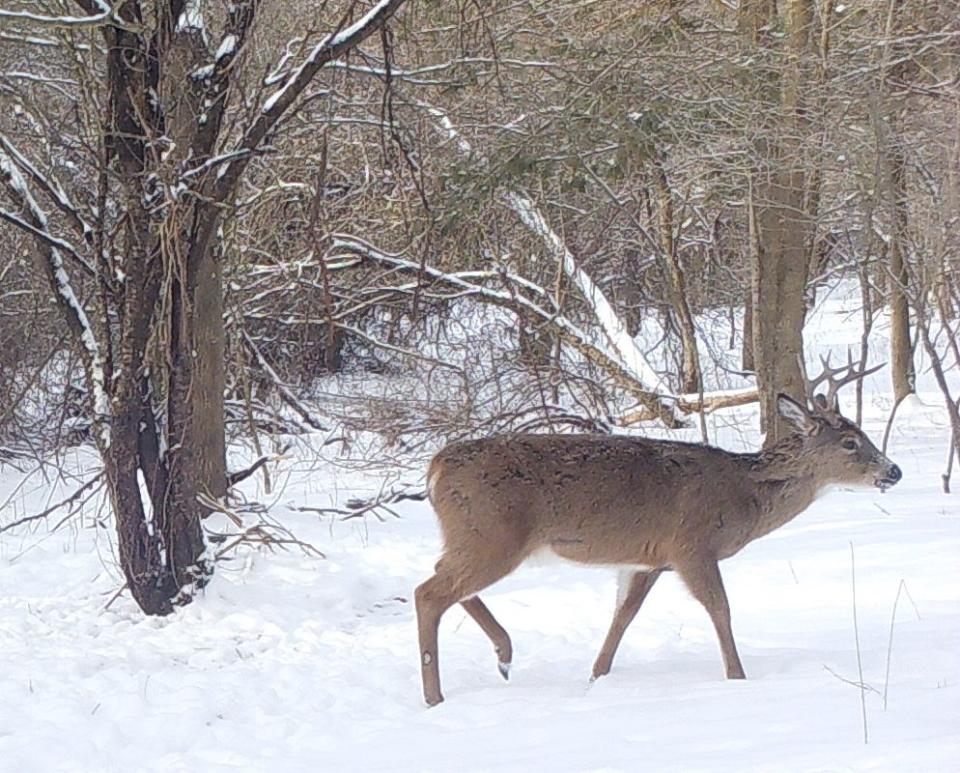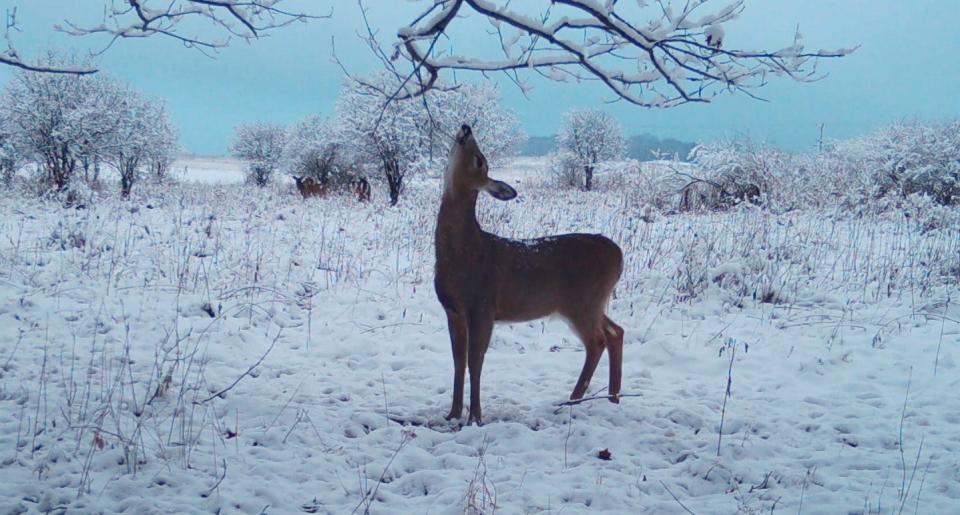A snow-swept muzzleloader season can be productive for deer hunters. Follow these tips.
Arctic-spawned flurries ripped through the late-December woods with an angry vengeance, sporadically showering snow off the big ridge-top hemlocks. The creaking and swaying of the stark hardwoods gave the entire woods a feeling of motion along with a finger-numbing, sub-zero wind chill.
Perfect.
It was finally muzzleloader season!
And it was finally cold!
That's right. The conditions were "premo" for still-hunting crosswind or into the wind at the tail end of the whitetail deer season, though the trip up the hill was problematical, even with a four-wheel drive truck!
Black powder hunters, those of us that prefer to carry a muzzleloader, and bow hunters have a number of different tactics as we try to fill one more tag in the final season, after the regular firearms deer season has closed.
Some prefer to take a stand in a blind or elevated shooting shack near a preferred food source. Others of us tough it out in a stand along a pinch-point or trail.
But my favorite way to hunt is to gear up with snow camo and "go out amongst 'em."

I have still-hunted whitetails for many years, under different conditions, and will say, hands down, still-hunting in a snowstorm in snow camo has been my most efficient technique. As crazy as it may seem, still-hunting in bad weather appears to be becoming even more effective than ever.
There may be some simple explanations for that assertion.
First of all, few deer hunters hunt on foot any more here in Western New York, unless they are participants in a deer drive.
Most hunt from a stand, whether a ground blind or an elevated tree stand. And nowadays, there are fewer small-game hunters in the woods ... and there seems to be fewer hikers, too.
Seems everyone is getting sucked into cyberspace. So whitetails are not used to seeing people in the woods as they did in years gone by ... so many hunters now access their woodlots and stands on machines, too.
Deer do not expect human beings to behave that way ... so few of us do. Even during the regular firearms seasons, the woods are full of hunters, but they are all pretty much stationary.
The key piece of gear a hunter can use when the snow is blowing and a tag needs to be filled is to gear up with snow camouflage ... at least a jacket. Deer have a very difficult time picking out a white-clad hunter against a white background. It never ceases to amaze me how close I can get to whitetails when in my snow camouflage. Don't forget to add a little blaze orange to the color scheme, like a vest and a hat ... just for safety's sake. Plus, now it is law in New York State.
When hunting, the deer hunter that still-hunts should pay strict attention to the direction of the wind gusts and slowly work crosswind, or into the wind, never upwind of the deer or the whitetails will be tipped off by the hunter's scent and long gone.
Sometimes, in order to get on the right side of the wind necessitates that the deer hunter circle around the woods and come in from a different way ... whatever it takes to get the wind right.
I’ve been known to walk a mile around a woodlot to come in from the right side, regarding the wind.
And such was my strategy that morning, and it was beautiful. In its own way, pristine.
There is just something new and fresh, exciting and full of anticipation about a winter storm. Sure, most everyone is hunkered down staring into a TV or a computer in a warm home, but it is my favorite time to hunt. The TV weather people scare everyone. Each time there is a snowstorm, it sounds like the apocalypse is knocking on the door.

As I eased through the trees, slowly stopping after every few steps, all of a sudden, there was a deer about 100 yards away, moving through the trees. I began slowly working my way on an interception vector towards the big animal, knowing that if careful, it wouldn’t see me or pick up my scent.
The muzzleloader came up to my shoulder and settled on the deer, "click."
"Darn, misfire."
Pull back the hammer ... line up the deer in the sight ... squeeze the trigger, "click."
“DARN!” (I said something else.)
Then I looked and saw that somehow the 209 primer, or percussion cap, had not been seated in its rightful place behind the breech plug. I wonder how that could have happened?
So carefully, the backpack had to be slipped off, rummaged around in, a cap found, then slowly put into its little slot in the breech, and again manually cocked, sighted and shot ... all in plain sight of the deer.
But behind a tree.
Move carefully, like the wind, slowly … don’t spook ‘em.
More: Whitetail rut prediction for 2024: What to expect while deer hunting this fall
Through this process, the whitetail and a few of its cohorts had slowly moved off further a couple dozen or so yards.
Distance needed to be closed before the final shot.
Carefully. Use the trees as blocks when moving, and as a rest when shooting.
And this time it worked!
The cap ignited the black powder and the simple chemistry in the barrel exploded, sending the little sawed-off football-shaped projectile on its way.
The deer dropped, the tag filled, as was the corner of the freezer with delectable venison, the best meat on the planet.
— Oak Duke writes a weekly column.
This article originally appeared on The Evening Tribune: Follow these tips for success when hunting with a muzzleloader

